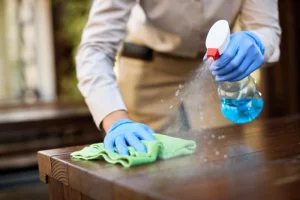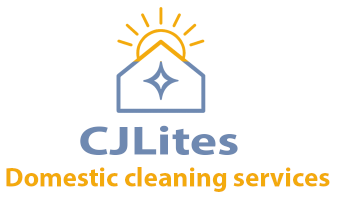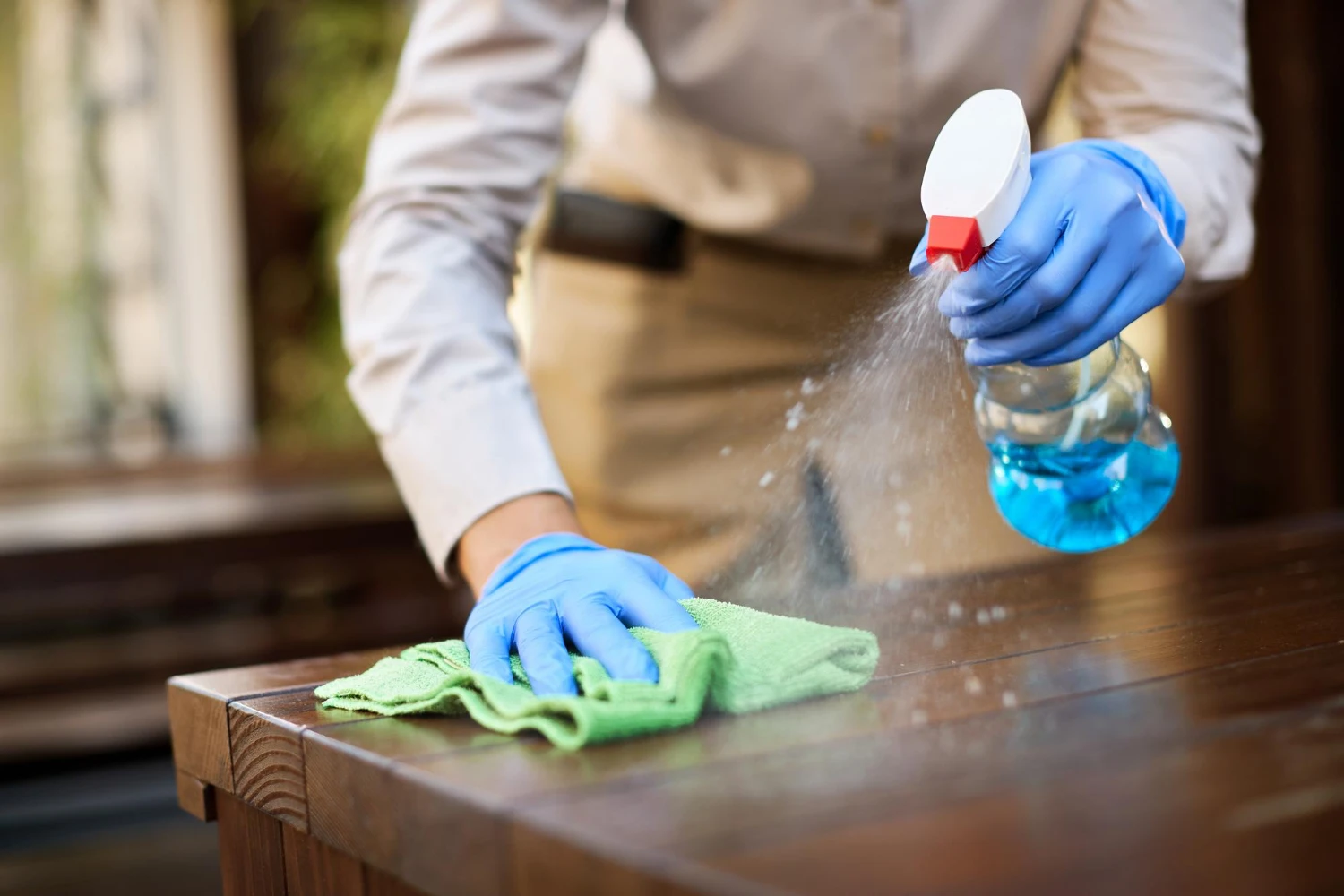Introduction
Infection prevention and control (IPC) remains a fundamental component of quality care delivery within health and social care environments. Effective IPC strategies safeguard both service users and staff by reducing the transmission of healthcare-associated infections (HCAIs), protecting vulnerable populations, and promoting overall well-being. Among these strateg ies, infection control-focused deep cleaning plays a critical role. This paper examines why deep cleaning is important for infection prevention and control, supported by current evidence and in line with laws and regulations for care settings.
ies, infection control-focused deep cleaning plays a critical role. This paper examines why deep cleaning is important for infection prevention and control, supported by current evidence and in line with laws and regulations for care settings.
Understanding Infection Control-Focused Deep Cleaning
Infection control-focused deep cleaning refers to an intensive, systematic cleaning process targeting surfaces, equipment, and environments to eliminate microbial contamination, including bacteria, viruses, and fungi. Deep cleaning extends beyond routine cleaning by incorporating comprehensive decontamination, particularly in high-risk areas or following an outbreak (National Institute for Health and Care Excellence [NICE], 2022).
Health and social care environments, particularly support homes, are susceptible to infectious outbreaks due to the vulnerability of residents, the presence of comorbidities, and frequent interpersonal interactions. Pathogens such as norovirus, influenza, Methicillin-resistant Staphylococcus aureus (MRSA), and, more recently, SARS-CoV-2, present significant risks within these settings (Loveday et al., 2014).
The Role of Deep Cleaning in Reducing Healthcare-Associated Infections (HCAIs)
The importance of infection control-focused deep cleaning is underscored by its proven role in reducing HCAIs. According to the World Health Organisation (WHO, 2016), environmental contamination significantly contributes to the transmission of infections, especially in communal areas and on high-touch surfaces. Deep cleaning disrupts this transmission chain by eliminating microbial reservoirs that standard cleaning may miss.
Evidence suggests that enhanced cleaning interventions can lead to measurable reductions in infection rates. For instance, a study by Dancer et al (2009) demonstrated a 30% reduction in MRSA infections following the implementation of structured deep cleaning protocols in a long-term care setting. Such findings affirm the critical role of deep cleaning in complementing hand hygiene, personal protective equipment (PPE), and other IPC measures (Dancer, 2019).
Infection Control Deep Cleaning: Protecting Vulnerable Populations
Individuals residing in support homes often present with advanced age, chronic illnesses, compromised immune function, and disabilities, making them disproportionately vulnerable to infections (Smith et al., 2021). Deep cleaning, when integrated into IPC frameworks, provides an essential safeguard against pathogen exposure in these populations.
Moreover, outbreaks within care settings can have devastating consequences, including increased morbidity and mortality, service disruptions, and reputational damage (Public Health England, 2021). Therefore, deep cleaning is not merely a hygienic practice but a public health imperative that contributes to safeguarding human rights, dignity, and quality of life.
Legislative and Regulatory Considerations
The importance of infection control-focused deep cleaning is reinforced by statutory requirements and professional standards. The Health and Social Care Act 2008 (Regulated Activities) Regulations 2014 mandate that care providers maintain premises in a clean and hygienic condition to prevent infections. Similarly, the Care Quality Commission (CQC) evaluates cleanliness and IPC compliance as part of its inspection framework (CQC, 2022).
Failure to adhere to robust cleaning protocols can lead to regulatory enforcement, reputational harm, and jeopardise organisational sustainability. Thus, care providers have both legal and ethical responsibilities to implement infection control-focused deep cleaning as part of their quality assurance processes.
Economic and Operational Benefits
While deep cleaning incurs resource investment, its preventive impact yields substantial economic and operational benefits. HCAIs are associated with increased healthcare costs due to extended hospital stays, additional treatments, staff sickness absence, and outbreak management (Guest et al., 2020). By mitigating infection risks, deep cleaning contributes to operational efficiency, workforce wellbeing, and continuity of care.
Furthermore, in the context of the COVID-19 pandemic, the integration of enhanced cleaning protocols has become integral to organisational resilience, reinforcing public confidence and service user satisfaction (PHE, 2021).
Challenges and Recommendations
Despite its importance, infection control-focused deep cleaning faces practical challenges, including workforce shortages, inconsistent training, and variations in cleaning standards (Dancer, 2019). To maximise its effectiveness, organisations must:
- Invest in professional cleaning services with expertise in IPC.
- Provide ongoing staff training aligned with evidence-based guidelines.
- Conduct regular environmental audits and risk assessments.
- Engage multidisciplinary teams in planning and evaluating IPC.
Conclusion
Infection control-focused deep cleaning is an indispensable component of comprehensive IPC strategies within health and social care settings. Its well-established role includes reducing environmental contamination, preventing HCAIs, and protecting vulnerable populations. Beyond the health benefits, deep cleaning contributes to regulatory compliance, organisational efficiency, and public trust.
Care providers must prioritise deep cleaning as a proactive, evidence-informed intervention that supports quality healthcare delivery, aligns with legal obligations, and upholds the dignity and safety of service users. As the complexity of healthcare environments evolves, so too must the commitment to rigorous, infection control-focused cleaning practices.
References
Care Quality Commission (CQC) (2022) ‘Fundamental standards: Cleanliness and Infection Prevention and Control.’ Available at: https://www.cqc.org.uk/what-we-do/how-we-do-our-job/fundamental-standards
Dancer, S.J., White, L.F., Lamb, J. (2009). Measuring the effect of enhanced cleaning in a UK hospital: a prospective cross-over study. BMC Med [online] 7, 28. Available from: https://doi.org/10.1186/1741-7015-7-28
Dancer, S.J. (2019) ‘Controlling hospital-acquired infection: focus on the role of the environment and new technologies for decontamination.’ Clinical Microbiology Reviews, [online] 32(1), pp. 1-35. Available from: https://ebn.bmj.com/content/22/4/117
Guest, J.F., Keating, T., Gould, D. and Wigglesworth, N. (2020) ‘Modelling the costs and consequences of reducing healthcare-associated infections by improving cleaning.’ Journal of Infection Prevention, [online] 21(2), pp. 50-58. Available from: https://bmjopen.bmj.com/content/10/1/e033367
Loveday, H.P., Wilson, J.A., Pratt, R.J. et al. (2014) ‘Epic3: National evidence-based guidelines for preventing healthcare-associated infections in NHS hospitals in England.’ Journal of Hospital Infection, [online] 86(S1), pp. 1-70. Available from: https://www.sciencedirect.com/science/article/pii/S0195670113600122?via%3Dihub
National Institute for Health and Care Excellence (NICE) (2022) ‘Healthcare-associated infections: prevention and control.’ Available at: https://www.nice.org.uk/guidance
Public Health England (PHE) (2021) ‘Infection Prevention and Control: Best Practice for Health and Care Settings.’ Available at: https://www.gov.uk/government/publications
Smith, R., Patel, M. and Clark, L. (2021) ‘Infection control challenges in long-term care: Learning from the COVID-19 pandemic.’ Nursing Older People, [online] 33(5), pp. 18-24. Available from: https://bmcgeriatr.biomedcentral.com/articles/10.1186/s12877-023-04319-w
World Health Organization (2016) Guidelines on core components of infection prevention and control programmes at the national and acute health care facility level: WHO. [online]. Available from: https://iris.who.int/bitstream/handle/10665/251730/9789241549929-eng.pdf?sequence=1


